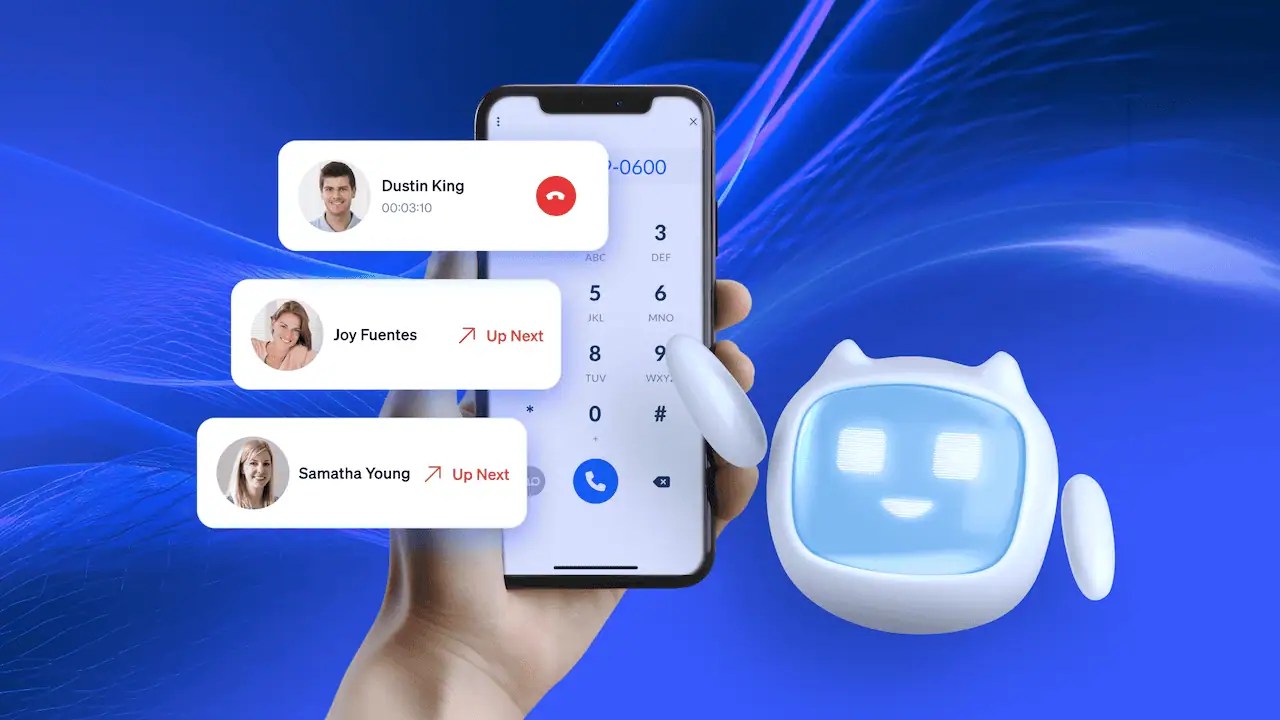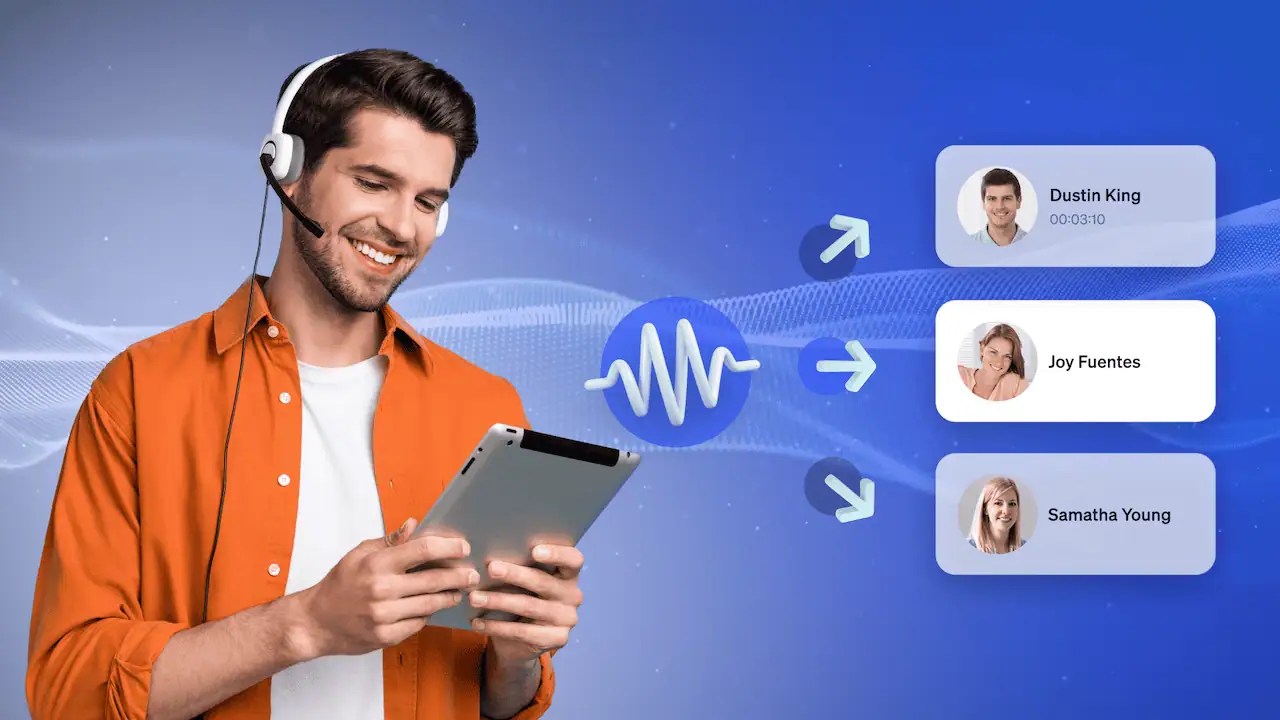When your phones are ringing off the hook, it can feel like a real chore to manage inbound calls. But behind each call is some form of intent.
It could be buyer intent, information-gathering intent, or complaint intent. But you won’t know why people are calling you until you start tracking your inbound calls. You’ve got calls, unknown intent, and a chasm of uncertainty between them. Inbound call tracking fills that gap by tying each phone call to the campaign, keyword, or web session that drove it.
What Is Inbound Call Tracking?
Inbound call tracking is a system that attributes, records, and analyzes incoming phone calls to provide actionable insights across marketing, sales, and support teams. We’re no longer talking about basic caller ID and time logs. Modern call tracking logs the campaign that triggered each call, tracks call outcomes (a sale, quote, or inquiry), and can assess agent performance or customer experience (CX) quality.
Sounds like quality monitoring, doesn’t it?
You’re on the right track, but this is more comprehensive. Unlike call quality monitoring, which is mostly used post-call, inbound call tracking begins with the source and continues throughout the entire customer interaction.
Using automatic number identification (ANI) and dialed number identification service (DNIS), you get tons of information passed down from the calling party for inbound call tracking solutions to create valuable insights that inform data-driven decisions.
Note: Both ANI and DNIS include local, national, and toll-free numbers.

How Inbound Call Tracking Works
At your inbound call center, the process starts with DNIS or software dynamically replacing phone numbers on your site with unique ones tied to the user session. Your call tracking platform then captures first-party data like UTM tags, referrers, and GCLIDs to understand exactly how callers found your business. Here’s what the acronyms mean:
- UTM: Urchin Tracking Module is a set of parameters added to URLs to track the effectiveness of digital marketing campaigns.
- GCLID: Google Click Identifier is a parameter passed in a URL with an ad click to identify a specific campaign.
When a user calls, the system routes them via interactive voice response (IVR) or smart routing while logging this metadata:
- Source
- Time
- Device
- Outcome
Tools like Nextiva’s call tracking integrate with CRM systems and ad platforms to complete the loop — and automate the updating of lead records and campaign dashboards.

Core Features of Inbound Call Tracking Software
Here are some features to keep in mind.
Dynamic number insertion
Call tracking with ads involves specifically chosen phone numbers based on customer behavior or a campaign’s original source. This could be Google Ads, social media, organic search (probably impacted by SEO), display ads, and events.
The great thing about dynamic number insertion (DNI) is that it prevents last-click attribution bias by showing which upstream campaigns or pages actually triggered the call. This is useful when a customer has started their journey from a particular source and then returned later, when already familiar with the brand. Using DNI means you get more reliable data for first-click (or entire customer journey) attribution.
For marketers managing multiple campaigns, or campaigns with lots of potential touchpoints, it helps distinguish between branded and non-branded traffic. You can then start to understand which ones drive high-intent calls.

Call recording & transcription summaries
If you turn on call recording (for compliance or quality monitoring), the right contact center provider will also grant you access to a wealth of functionality that aids inbound call tracking.
The first step is automatic call transcription using speech recognition. Every call turns into a text-based conversation that is both searchable and analyzable.
The next step is post-call analysis, which gives you insights into repeated queries, keyword triggers, and sentiment analysis. Keywords and phrases are completely configurable and customizable.
Knowing how your callers feel at different stages of a call or script is useful for sales coaching, compliance, and marketing message refinement. For example, if salespeople are pushing for an upsell too early in the call, these keywords get flagged, and you can make changes to your script structure.

Call tagging & scoring
You can apply tags to categorize calls by campaign, call reason, or outcome (quote sale, support, spam, missed). This simple action, whether automated or manual, helps identify calls when needed for follow-up at a later date. It also helps give you an at-a-glance view of how many calls of each type enter your business.
When you start to score these calls (with lead scoring being the most common type of scoring), it helps identify which sales calls led to revenue generation, wasted time, or something in between. Over time, this provides a benchmark to improve future marketing efforts through targeting and lead qualification.
CRM integrations
Almost every lead generation and marketing team relies on its CRM solution as the single source of truth for all customer information. By integrating not just your call center software but also your call tracking, you can push call data (including call recordings, sources, and outcomes) into Salesforce, HubSpot, or any custom CRM system by using Nextiva’s open API.
Doing so enables analysis based on actual calls, not just clicks, all within the CRM platform. There’s no need for switching between apps or exporting data to Excel spreadsheets to upload elsewhere. Integration takes care of everything.
Find out more about the top CRMs with Nextiva.

Smart call routing & IVR support
When you have specific information about an incoming call, you can automatically route it based on the context provided by these details:
- Location
- Campaign
- Device type
- Caller history
Your inbound call flows take the unique identifier and send the call to the right place the first time. The result? You reduce wait times, and customers have a lower average handle time, increasing the chances of successful sales.
This is great for differentiating between new leads and returning customers. You must make a great first impression on your prospects to stand a chance of completing any sales with them. Likewise, with existing customers, ensuring first call resolution (FCR) helps with retention and increases your conversion rates for cross-sells.
You can learn more here about how call routing works.

Missed call insights & follow-up triggers
What happens when you don’t answer a call? At the majority of call centers, unanswered calls are documented as missed, which impacts their call abandonment rate. Then, nothing else happens.
Instead, you could use smart insights and follow-up triggers to notify agents or workflows whenever a high-value (or any value) lead doesn’t connect. Once the missed connection is recognized, your contact center system will schedule automatic callbacks or emails based on call scoring or tagging.
If you run a blended contact center and return missed calls via your outbound dialer, these two functionalities work in unison. You benefit by preventing the loss of leads who call after hours or hang up during wait times, and customers get the callbacks they want.

Why Inbound Call Tracking Matters for Marketing Return on Investment
Let’s talk about COMO. No, not the idyllic holiday destination in northern Italy — we’re talking about the cost of missing out. And it’s not just the missed call reporting and actioning.
Without call tracking for your inbound contact center, your marketing strategy lacks key conversion data, especially for service-based businesses, franchises, or high-ticket industries.
Attribution is key: Whether you’re running an outbound or inbound call center, knowing which call center campaign led to which call (and which calls turned into sales) enables you to double down on what works. At the other end of the spectrum, if a particular campaign isn’t performing well or is producing poor-quality leads, adjustments can be made too, saving you money on ad spending and optimizing in the right places.
How Inbound Call Tracking Supports Sales & CX Teams
When a call comes in, info from inbound call tracking gives sales teams context so they can prepare to answer it with a personalized response. They get a history of what the customer has viewed, which campaign they came from, and what product they’re interested in.
From a technology perspective, this ensures callers get routed to the most suitable agent. From a sales perspective, it gives your teams the tools they need to best accommodate callers and push them down the right sales funnel.
Likewise, CX teams get a view of who’s calling (with the screen pop feature) to learn more about their customers. After these calls, you can track pain points, identify repeat issues, and prioritize callbacks based on sentiment or value.
When integrated with quality assurance tools, this helps coach reps and optimize playbooks based on real conversations. The more data you have at your disposal, the better you can prepare your call center agents.
Choose Nextiva for Inbound Call Tracking
Nextiva combines phone systems, contact centers, and call tracking on one unified platform. You’ll say goodbye to juggling disconnected tools and benefit from all your data being housed on a single platform.
That data then turns into powerful real-time call analytics and conversation intelligence to let you capture, route, and optimize every call. Nextiva ensures you get:
- Every call to the right agent: Increasing the chance of a sale or FCR
- Evergreen context and metrics: Allowing you to refine marketing messaging and sales scripts
- Deep integration with CRM solutions: Making it easy to unify your data from Salesforce, HubSpot, and Google Ads and use a single pane of glass for interaction history
- Scalable pricing: Scaling up or down by seasonal demand or business growth
- Award-winning customer support: Keeping you connected 24/7
Ready to uncover business-changing call insights? Book your free demo of Nextiva Analytics today.
Top AI-Powered Contact Center Solution
Transform your customer interactions with a contact center platform that saves you time and money, reduces agent and supervisor stress, and flexibly adapts to fit your needs.

















 Customer Experience
Customer Experience 






